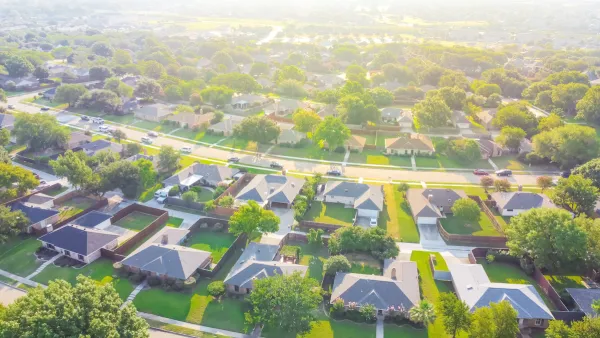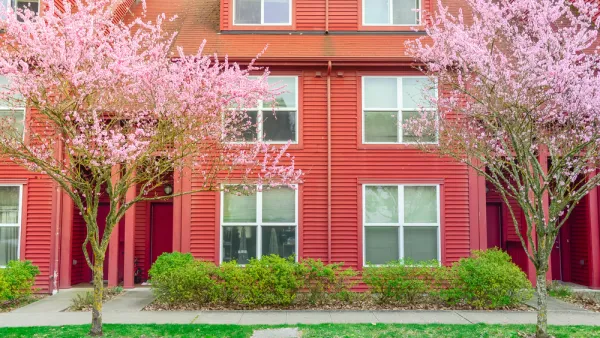Small, often wealthy enclaves build far less multifamily housing than their larger counterparts, exacerbating the dearth of affordable housing near big cities and job centers.

In an article in The Conversation, Paul G. Lewis and Nicholas J. Marantz explain how small, wealthy suburbs contribute to California’s housing crisis by resisting state efforts to mandate or encourage more housing construction.
The authors used census tract data to examine multifamily housing development in cities of various sizes between 2008 and 2018. “Over that span, according to our statistical estimates, a typical neighborhood-size census tract located within a city of 100,000 residents saw the development of 46 more new multifamily units than an otherwise very similar census tract located within a smaller city of 30,000 residents.”
This data reveals that smaller towns are less likely to add sorely needed apartments and other multifamily housing types. When the analysis was expanded to the entire country, the pattern was similar. Wealthy suburbs, often on the outskirts of large cities, fight new housing development; new housing development, if it happens, is pushed farther out, extending commutes and aggravating sprawl.
The authors explain that the nature of small cities makes them prone to political interests that skew toward the status quo. “To be sure, many homeowners in big cities have similar worries. But in a large, diverse city, anti-growth voices often are counterbalanced by pro-housing interests active in city politics, such as large employers, developers, construction unions or affordable-housing nonprofits.”
The article lists the possible mandates and incentives states have implemented to reduce barriers to housing construction, but, as evidenced by Silicon Valley cities, NIMBY groups will attempt creative ways to skirt regulations. In one ambitious example from Oregon, “Voters created and then strengthened an elective metro government to not just plan but actually carry out key regional land-use priorities” in the Portland region.
FULL STORY: How small wealthy suburbs contribute to regional housing problems

National Parks Layoffs Will Cause Communities to Lose Billions
Thousands of essential park workers were laid off this week, just before the busy spring break season.

Retro-silient?: America’s First “Eco-burb,” The Woodlands Turns 50
A master-planned community north of Houston offers lessons on green infrastructure and resilient design, but falls short of its founder’s lofty affordability and walkability goals.

Delivering for America Plan Will Downgrade Mail Service in at Least 49.5 Percent of Zip Codes
Republican and Democrat lawmakers criticize the plan for its disproportionate negative impact on rural communities.

Test News Post 1
This is a summary

Test News Headline 46
Test for the image on the front page.

Balancing Bombs and Butterflies: How the National Guard Protects a Rare Species
The National Guard at Fort Indiantown Gap uses GIS technology and land management strategies to balance military training with conservation efforts, ensuring the survival of the rare eastern regal fritillary butterfly.
Urban Design for Planners 1: Software Tools
This six-course series explores essential urban design concepts using open source software and equips planners with the tools they need to participate fully in the urban design process.
Planning for Universal Design
Learn the tools for implementing Universal Design in planning regulations.
EMC Planning Group, Inc.
Planetizen
Planetizen
Mpact (formerly Rail~Volution)
Great Falls Development Authority, Inc.
HUDs Office of Policy Development and Research
NYU Wagner Graduate School of Public Service





























